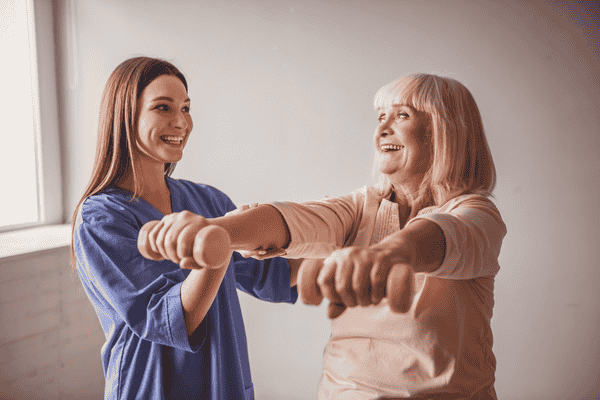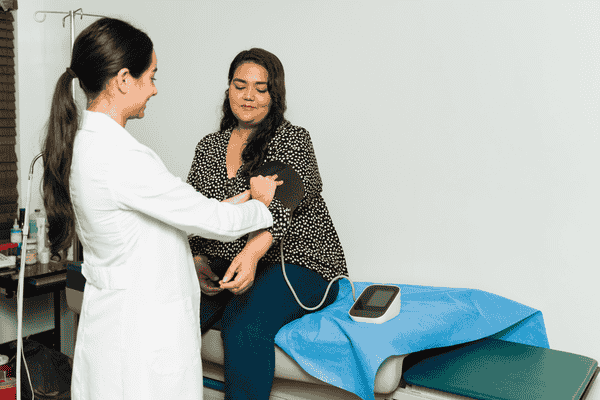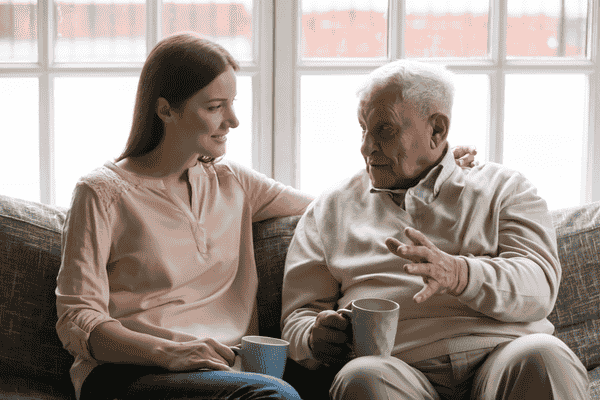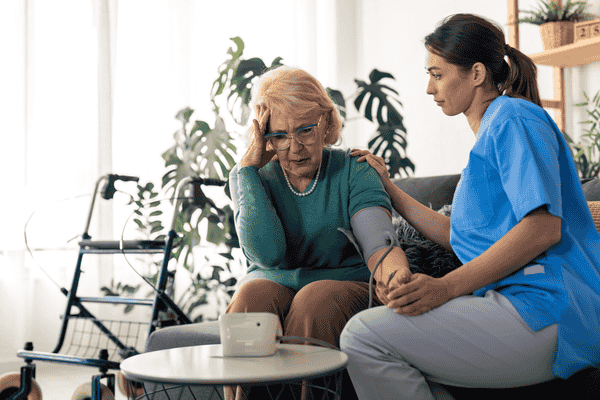Imagine this: You’re an elderly individual looking to boost your health through aerobic exercise, but you’re unsure where to begin. You’ve heard about the benefits—improved heart health, increased stamina, and better mobility—but the flood of exercise options feels overwhelming. You want to stay active and maintain your well-being, but you also know that jumping into an exercise routines without guidance might not be the best idea.
You’re not alone. Many seniors feel the same way when they think about starting a new exercise regimen. The good news? There’s a way to approach aerobic exercise safely and effectively: by consulting a healthcare provider.
Whether you’re hoping to manage chronic conditions like diabetes or arthritis, or you’re looking to increase your overall fitness, healthcare providers can help design personalized exercise routines that fit your unique needs. In this guide, we’ll explore why involving healthcare professionals in your fitness journey is essential for your safety and success.
Understanding the Benefits of Healthcare Provider Consultation
The idea of consulting a healthcare provider might seem unnecessary to some. After all, isn’t exercise always a good thing? While aerobic exercise offers numerous health benefits, seniors have unique needs that should be considered. Consulting a healthcare provider ensures that you embark on a fitness journey that’s both safe and tailored to your individual health concerns.
1. Personalized Advice
Every person is different, and so are their health needs. A healthcare provider takes into account your medical history, fitness level, and any underlying conditions before recommending an aerobic exercise routine. This personalized advice can help you engage in exercises that are both safe and beneficial.
For example, someone with a history of heart disease may need to avoid certain high-intensity exercises, while someone with osteoarthritis might benefit from low-impact activities like swimming or cycling. By consulting a healthcare provider, you can get a routine that works for your body, not against it.
2. Monitoring Health Conditions
Many seniors live with chronic conditions such as hypertension, diabetes, or joint problems. Regular aerobic exercise can help manage these conditions, but it also requires close monitoring. A healthcare provider can regularly assess your heart rate, blood pressure, and blood sugar levels to ensure that the exercise is beneficial and not causing harm.
Imagine someone like Margaret, a 72-year-old woman with type 2 diabetes. She loves walking but noticed her blood sugar sometimes dips too low after a long walk. Her healthcare provider adjusted her exercise routine and advised her to monitor her glucose levels closely before and after exercise. By following this guidance, Margaret was able to continue exercising safely without experiencing dangerous blood sugar fluctuations.
3. Preventing Injuries
Exercise, when done incorrectly, can cause injury—especially for seniors. Healthcare providers guide you on proper form, technique, and modifications to exercises to prevent injury. This is especially important if you have mobility limitations or are recovering from surgery. Proper warm-ups, cool-downs, and stretching routines can be incorporated to protect your joints and muscles.
4. Managing Chronic Conditions
Many elderly individuals struggle with chronic conditions like arthritis, heart disease, or osteoporosis. These conditions can make it difficult to find the right kind of exercise. Healthcare providers are skilled at creating exercise routines that help manage these conditions.
For instance, someone with osteoarthritis might benefit from water aerobics or tai chi, both of which are gentle on the joints but still offer cardiovascular benefits. Healthcare providers can tailor exercises so you can manage your condition while still reaping the rewards of regular physical activity.
5. Ensuring Appropriate Intensity and Progression
For seniors, overexertion is a genuine risk. While pushing yourself during exercise is part of building endurance, going too far can lead to injury or exacerbate existing health issues. A healthcare provider helps you determine the appropriate intensity, frequency, and duration of your aerobic exercise, so you don’t overdo it.
John, an 80-year-old man, loved to swim but was unsure how many laps were enough for his age. His healthcare provider recommended starting with 10 minutes of moderate swimming and increasing the time gradually, monitoring his heart rate and breathing closely. By setting realistic goals, John could safely improve his cardiovascular fitness.
Key Factors to Consider in Aerobic Exercise Routines for the Elderly
When healthcare providers develop aerobic exercise routines for seniors, several factors come into play. These factors help ensure the exercise program is safe, effective, and aligned with an elderly individual’s needs.
Conducting a Physical Fitness Assessment
Before starting any exercise program, healthcare providers conduct a thorough physical fitness assessment. This includes evaluating cardiovascular health, flexibility, balance, and muscle strength. A good assessment helps determine which types of aerobic exercise are suitable and which should be avoided.
Setting Realistic Goals
Setting realistic goals is vital to maintaining motivation and achieving long-term success. Healthcare providers help seniors set achievable fitness targets, whether it’s walking for 30 minutes three times a week or gradually increasing the intensity of a cycling routine.
Selecting Appropriate Exercises
Not all aerobic exercises are created equal. For seniors, low-impact activities such as walking, swimming, cycling, or water aerobics are often the best options. These exercises are gentle on the joints and provide cardiovascular benefits without putting too much strain on the body.
Determining Exercise Intensity, Duration, and Frequency
The intensity of aerobic exercises should be appropriate for the individual’s fitness level and health conditions. For seniors, moderate-intensity aerobic exercise for at least 150 minutes per week is generally recommended. However, healthcare providers help break this down into manageable sessions that can be spread out over the week.
Health Conditions and Individual Needs
Let’s take a deeper look into how healthcare providers tailor exercise routines to specific health conditions.
Osteoarthritis
For seniors with osteoarthritis, low-impact exercises are crucial to avoid aggravating the joints. Healthcare providers often recommend swimming or water aerobics, as the buoyancy of the water reduces stress on the joints while still providing a good cardiovascular workout.
Diabetes
Seniors with diabetes benefit from aerobic exercises that help regulate blood sugar levels. However, blood sugar must be closely monitored, especially before and after exercise. Healthcare providers will guide patients on adjusting their routines and possibly their medications to avoid hypoglycemia.
Obesity
For seniors struggling with obesity, aerobic exercise is an essential tool for weight management and cardiovascular health. Healthcare providers may recommend a combination of low-impact cardio and strength training to boost metabolism and improve muscle mass.
Osteoporosis
Weight-bearing aerobic exercises, such as walking or dancing, are ideal for seniors with osteoporosis, as they help maintain bone density. Healthcare providers may also suggest strength-training exercises to further enhance bone health and prevent fractures.
Safety Tips and Precautions
Safety is always a top priority when engaging in aerobic exercise, especially for seniors. Here are some practical tips:
- Warm-Up and Cool-Down: Always start with a warm-up to get the muscles ready and prevent injury. Cool-down exercises help return your body to its resting state gradually.
- Listen to Your Body: If you feel pain, dizziness, or shortness of breath during exercise, stop immediately. Never push yourself beyond your limits.
- Hydrate and Rest: Drink water before, during, and after your workout. Take rest days to give your body time to recover.
- Proper Footwear and Environment: Wear supportive shoes and ensure your exercise space is safe, free of clutter and tripping hazards.
- Regular Monitoring: Keep regular appointments with your healthcare provider to monitor progress and adjust your exercise plan as needed.
Conclusion: The Power of Professional Guidance
For elderly individuals, embarking on an aerobic exercise routine is one of the best ways to improve physical and mental health. However, safety should always come first. Consulting a healthcare provider ensures that your exercise plan is personalized, safe, and aligned with your health needs.
Through professional guidance, seniors can engage in aerobic exercise that not only enhances cardiovascular fitness but also promotes overall well-being. So, before lacing up those walking shoes or hopping into the pool, take a moment to consult with your healthcare provider—it might just be the key to unlocking a healthier, happier you.













